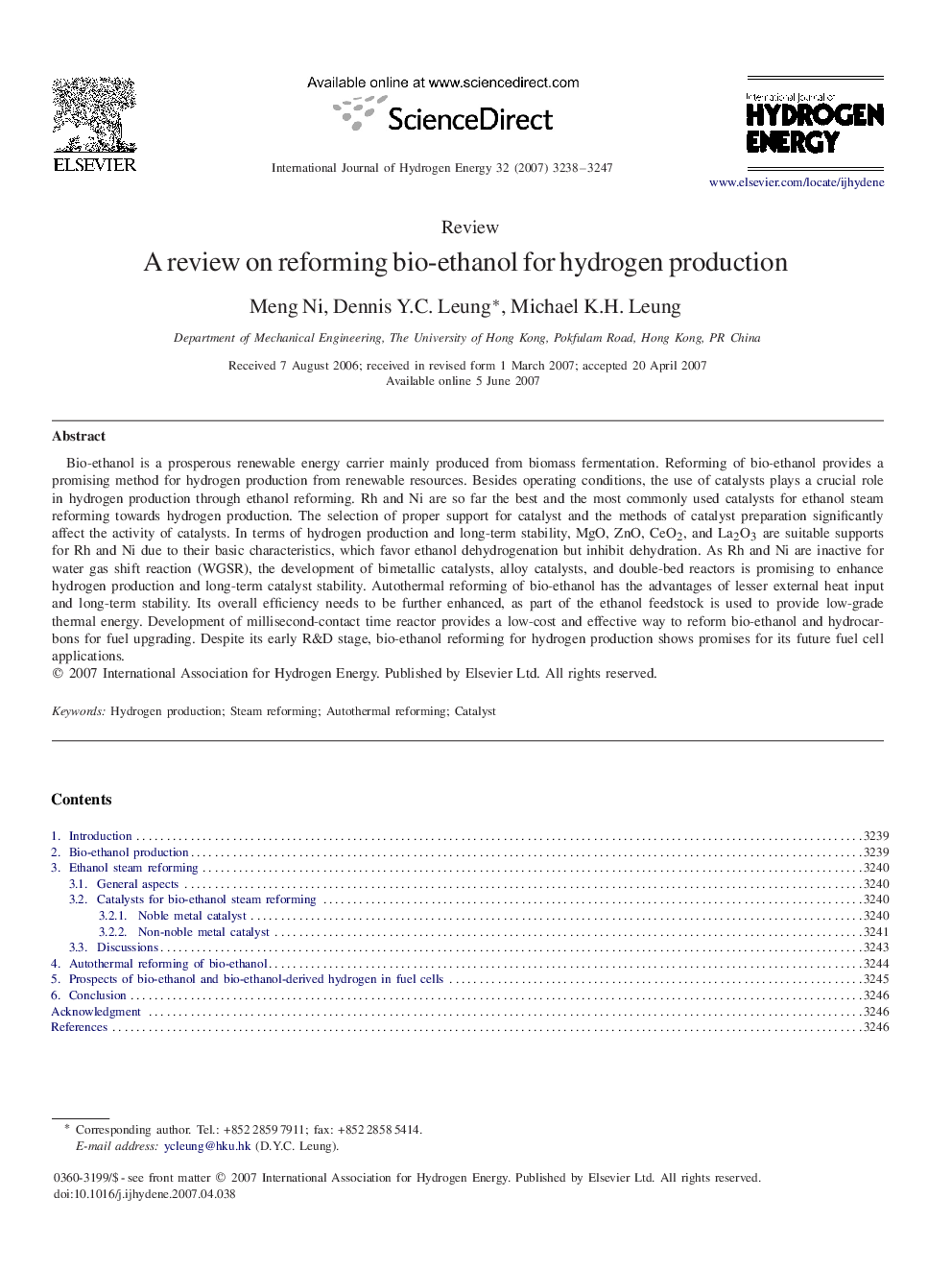| Article ID | Journal | Published Year | Pages | File Type |
|---|---|---|---|---|
| 1279662 | International Journal of Hydrogen Energy | 2007 | 10 Pages |
Bio-ethanol is a prosperous renewable energy carrier mainly produced from biomass fermentation. Reforming of bio-ethanol provides a promising method for hydrogen production from renewable resources. Besides operating conditions, the use of catalysts plays a crucial role in hydrogen production through ethanol reforming. Rh and Ni are so far the best and the most commonly used catalysts for ethanol steam reforming towards hydrogen production. The selection of proper support for catalyst and the methods of catalyst preparation significantly affect the activity of catalysts. In terms of hydrogen production and long-term stability, MgO, ZnO, CeO2CeO2, and La2O3La2O3 are suitable supports for Rh and Ni due to their basic characteristics, which favor ethanol dehydrogenation but inhibit dehydration. As Rh and Ni are inactive for water gas shift reaction (WGSR), the development of bimetallic catalysts, alloy catalysts, and double-bed reactors is promising to enhance hydrogen production and long-term catalyst stability. Autothermal reforming of bio-ethanol has the advantages of lesser external heat input and long-term stability. Its overall efficiency needs to be further enhanced, as part of the ethanol feedstock is used to provide low-grade thermal energy. Development of millisecond-contact time reactor provides a low-cost and effective way to reform bio-ethanol and hydrocarbons for fuel upgrading. Despite its early R&D stage, bio-ethanol reforming for hydrogen production shows promises for its future fuel cell applications.
